Troy-Bilt TB130 Handleiding
Troy-Bilt
Grasmaaier
TB130
Bekijk gratis de handleiding van Troy-Bilt TB130 (48 pagina’s), behorend tot de categorie Grasmaaier. Deze gids werd als nuttig beoordeeld door 52 mensen en kreeg gemiddeld 4.7 sterren uit 26.5 reviews. Heb je een vraag over Troy-Bilt TB130 of wil je andere gebruikers van dit product iets vragen? Stel een vraag
Pagina 1/48

Safe Operation Practices • Set-Up • Operation • Service And Maintenance • Troubleshooting • Replacement Parts
OperatOr’s Manual
Form No. 769-25350
(July 17, 2020)
159 cc, 196 cc and 224 cc
OHV Vertical Shaft Engines
NOTE: This Operator’s Manual covers several models. Features may vary by model. Not all features in this manual are
applicable to all models and the model depicted may differ from yours.
WARNING
Read and follow all safety rules and instructions in this manual before attempting to operate.
Failure to comply with these instructions may result in personal injury - SAVE THESE INSTRUCTIONS.
WARNING
CALIFORNIA PROPOSITION 65
Engine exhaust, some of its constituents, and certain vehicle components contain or emit chemicals
known to State of California to cause cancer and birth defects or other reproductive harm.
Record Product Information
Before setting up and operating your new
engine, please locate the model plate and record
the information in the provided area to the right.
You can locate the model plate by standing at
the operator’s position and looking at the rear or
right side of the engine. This information will be
necessary, should you seek technical support via
our web site, Customer Support Department, or
with a local authorized service dealer.
Model Number
Serial Number
English ......................................................................................................................................Page 2
Spanish (Español) ....................................................................................................................Page 16
French (Français) ......................................................................................................................Page 31

2
SAFE OPERATION PRACTICES
TRAINING
1. Read, understand and follow all warnings and instructions on
the engine and the equipment, and in the operator’s manuals
before attempting to install and/or operate. Keep this manual
in a safe place for future and regular reference and for
ordering replacement parts.
2. Be familiar with all controls and their proper operation. Know
how to stop the engine and disengage them quickly.
3. Never allow children under 14 years of age to operate the
equipment. Children 14 and over should read and understand
the warnings and instructions both on the product and in the
manuals and be trained and supervised by an adult.
4. Never allow adults to operate the equipment without proper
instruction.
5. Keep the area of operation clear of all persons, particularly
small children and pets. Stop the engine if anyone enters
the area.
PREPARATION
1. Wear sturdy, rough-soled work shoes and close fitting slacks
and shirts. Loose fitting clothes or jewelry can be caught in
the moving parts. Never operate the equipment in bare feet
or sandals.
2. Disengage all powered clutch and drive control levers on the
equipment before starting the engine.
3. Never leave the engine running while unattended.
4. Never attempt to make any adjustments while the engine
is running, except where specifically recommended in the
operator’s manual(s).
SAFE HANDLING OF GASOLINE:
To avoid personal injury or property damage, use extreme care
in handling gasoline. Gasoline is extremely flammable and the
vapors are explosive. Serious personal injury can occur when
gasoline is spilled on yourself and/or your clothes which can
ignite. Wash your skin and change clothes immediately.
1. When adding fuel, turn engine OFF and let engine cool at
least 5 minutes before removing the fuel cap.
2. Fill fuel tank outdoors or in well ventilated area.
3. Use only an approved fuel container.
4. Never fill containers inside a vehicle or on a truck or trailer
bed with a plastic liner. Always place containers on the
ground away from your vehicle before filling.
5. If possible, remove equipment from the truck or trailer and
refuel it on the ground. If this is not possible, then refuel
equipment on a trailer with a portable container, rather than
from a fuel pump dispenser nozzle.
6. Keep the nozzle in contact with the rim of the fuel tank or
container opening at all times until fueling is complete. Do
not use a nozzle lock-open device.
7. Do not overfill fuel tank. Fill tank to full as indicated by the
fuel level indicator installed inside the fuel tank to allow
space for fuel expansion. On some models, a fuel level
indicator may NOT be present, in this instance, fill the tank
no more than 1/2 inch below the bottom of the filler neck to
allow space for fuel expansion.
8. Replace fuel cap and tighten securely.
9. If fuel is spilled, wipe it off the engine and the equipment.
Move equipment to another area and wait 5 minutes before
starting the engine.
10. To reduce fire hazards, keep the engine and equipment free
of grass , leaves or other debris build up. Clean up oil or fuel
spillage and remove any fuel-soaked debris.
11. Keep fuel away from sparks, open flames, pilot lights, heat,
and other ignition sources.
WARNING
This symbol points out important safety instructions which, if not followed, could endanger the personal
safety and/or property of yourself and others. Read and follow all instructions in this manual before
attempting to operate. Failure to comply with these instructions may result in personal injury. When you see
this symbol, HEED ITS WARNING!
DANGER
This engine was built to be operated according to the safe operation practices in this manual. As with any type of power
equipment, carelessness or error on the part of the operator can result in serious injury. Failure to observe the following
safety instructions could result in serious injury or death.

3
SAFE OPERATION PRACTICES
12. Never fuel equipment indoors because flammable vapors will
accumulate in the area.
13. Extinguish all cigarettes, cigars, pipes, and other sources of
ignition.
14. Check fuel line, tank, cap, and fittings frequently for cracks or
leaks. Replace if necessary.
OPERATION
1. When starting the engine, make sure spark plug, muffler, and
fuel cap are in place.
2. Do not crank engine with spark plug removed.
3. If fuel is spilled, wipe it off the engine and the equipment.
Move equipment to another area and wait 5 minutes before
starting the engine.
4. Allow engine and muffler to cool before touching.
5. Keep small children away from hot or running engines. They
are unaware of the dangers and can suffer burns from the
engine and muffler.
6. Remove any accumulated debris from the engine cylinder and
muffler areas.
7. Operate equipment with all shields and guards in place.
8. Keep hands and feet away from rotating parts.
9. Wear sturdy, rough-soled work shoes and close-fitting slacks
and shirts. Loose fitting clothes, jewelry and long hair can be
caught in moving parts. Shirts and pants that cover the arms
and legs and steel-toed shoes are recommended.
10. When starting the engine with the recoil starter, pull handle
slowly until resistance is felt, then pull rapidly, repeat if
necessary.
11. Remove all equipment engine loads before starting engine.
12. Direct coupled equipment components such as, but not
limited to blades, impellers, pulleys, sprockets, etc., must be
securely attached.
MAINTENANCE & STORAGE
1. Keep the engine and equipment in safe working condition.
2. Allow the engine to cool at least 5 minutes before storing
equipment. Never tamper with safety devices. Check their
proper operation regularly.
3. Check bolts and screws for proper tightness at frequent
intervals to keep the engine and equipment in safe working
condition. Visually inspect them for any damage.
4. Before cleaning, repairing or inspecting; stop the engine and
make certain all moving parts have stopped. Disconnect the
spark plug wire and ground it against the engine to prevent
unintended starting.
5. Do not change the engine governor settings or over-speed
the engine. The governor controls the maximum safe
operating speed of the engine.
6. Maintain and replace safety and instruction labels as
necessary.
7. Always refer to the operator’s manuals for important details if
the equipment is to be stored for an extended period of time.
8. If the fuel tank has to be drained, do this outdoors.
9. Observe proper disposal laws and regulations for fuel, oil, etc.
to protect the environment.
DO NOT MODIFY ENGINE
To avoid serious injury or death, do not modify engine in
any way. Tampering with the governor setting can lead
to a runaway engine and cause it to operate at unsafe
speeds. Never tamper with factory setting of engine
governor.
NOTICE REGARDING EMISSIONS
Engines which are certified to comply with California and
federal EPA emission regulations for SORE (Small Off Road
Equipment) are certified to operate on regular unleaded
gasoline, and may include the following emission control
systems: Engine Modification (EM), Oxidizing Catalyst
(OC), Secondary Air Injection (SAI) and Three Way Catalyst
(TWC) if so equipped.
INTENDED USE:
The engine models listed on the cover of this manual are
specifically designed and intended for use on designated
outdoor power equipment only. The engine models listed
also have been approved for use as replacement engines
for products such as mowers, edgers and wheeled
string trimmers. These engines are not approved for
use in other applications. Engines used in non-approved
applications or subjected to any modifications or misuse
will void the engine warranty.
WARNING
Failure to use an engine as intended and as instructed
may lead to property damage, personal injury or death.
ENGINE REPLACEMENT:
Please check your equipment specifications for
important specific engine information, such as engine
size (cc), type of shaft (horizontal or vertical) crank shaft
dimensions, mounting bolt pattern, engine speed (rpm),
oil capacity, fuel tank size, controls (throttle/choke),
starting (recoil or electric), shut down capabilities,
accessory wiring needs and other emission related
specifications.
Product specificaties
| Merk: | Troy-Bilt |
| Categorie: | Grasmaaier |
| Model: | TB130 |
Heb je hulp nodig?
Als je hulp nodig hebt met Troy-Bilt TB130 stel dan hieronder een vraag en andere gebruikers zullen je antwoorden
Handleiding Grasmaaier Troy-Bilt
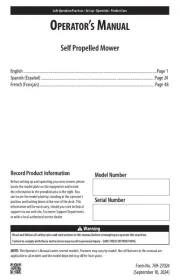
11 Februari 2025
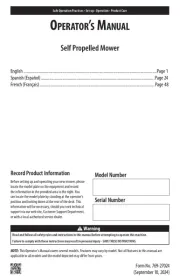
10 Februari 2025
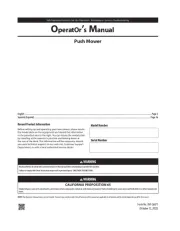
10 Februari 2025

31 Januari 2024

31 Januari 2024

31 Januari 2024

31 Januari 2024

31 Januari 2024

31 Januari 2024

31 Januari 2024
Handleiding Grasmaaier
- Powerbase
- Plantiflor
- PowerG
- Practixx
- Viking
- Exgain
- Milwaukee
- MTD
- Brill
- Yard Machines
- IKRA
- Powerworks
- Zgonc
- Cramer
- Hecht
Nieuwste handleidingen voor Grasmaaier
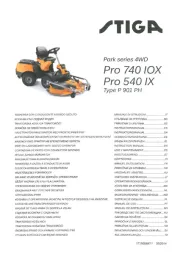
29 Juli 2025
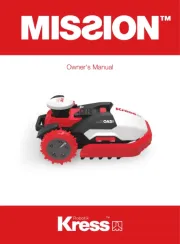
28 Juli 2025
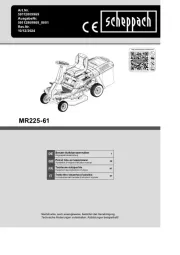
22 Juli 2025
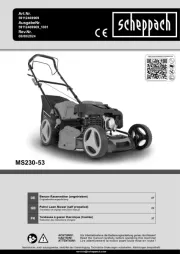
21 Juli 2025
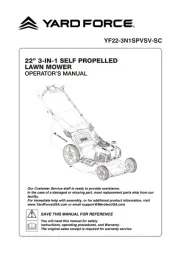
17 Juli 2025
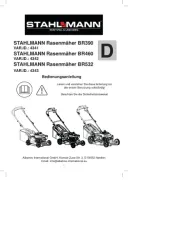
16 Juli 2025
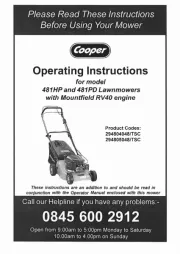
16 Juli 2025
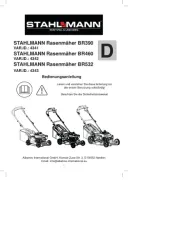
16 Juli 2025
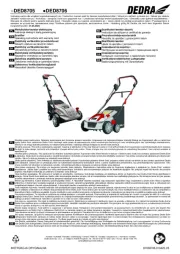
15 Juli 2025
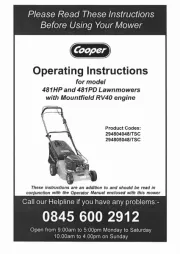
15 Juli 2025